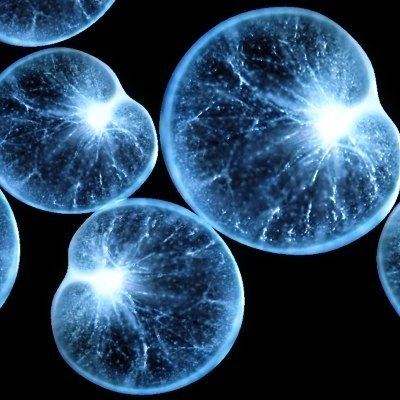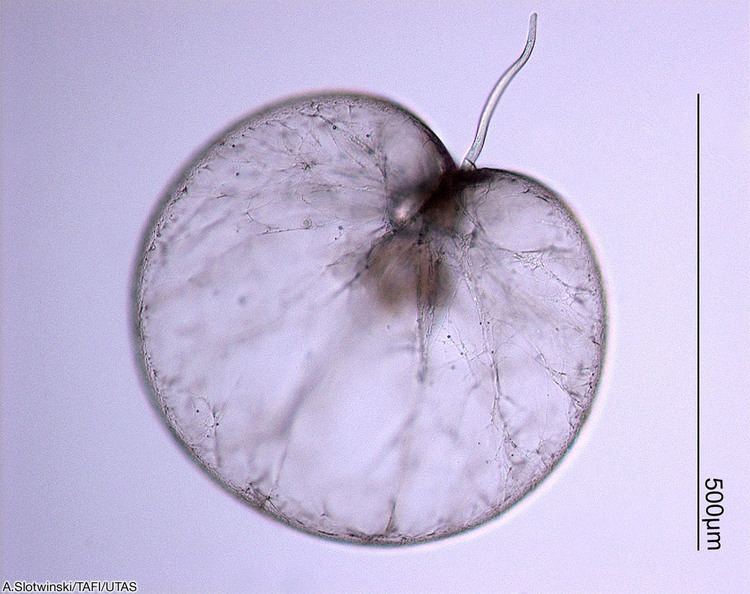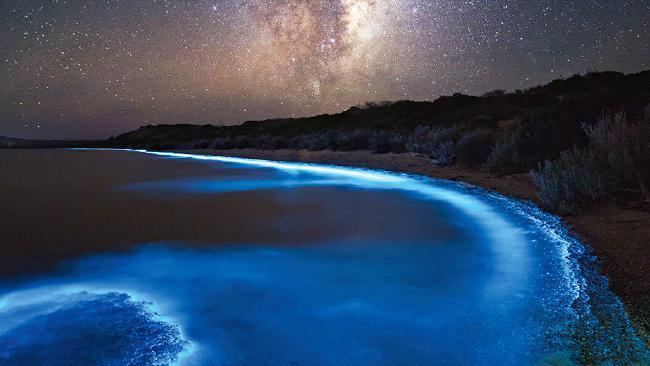Domain Eukaryota Genus Noctiluca Higher classification Noctiluca | Phylum Dinoflagellata Scientific name Noctiluca scintillans Rank Species | |
 | ||
Similar Noctiluca, Noctilucales, dinoflagellate, Vargula hilgendorfii, Gymnodinium | ||
Noctiluca scintillans
Noctiluca scintillans, commonly known as the sea sparkle, and also published as Noctiluca miliaris, is a free-living, nonparasitic, marine-dwelling species of dinoflagellate that exhibits bioluminescence when disturbed (popularly known as mareel). Its bioluminescence is produced throughout the cytoplasm of this single-celled protist, by a Luciferin-luciferase reaction in thousands of spherically shaped organelles, called scintillons. Nonluminescent populations within the genus Noctiluca lack these scintillons.
Contents
- Noctiluca scintillans
- Red tide noctiluca scintillans plankton bloom
- Diet
- Distribution
- Physical characteristics
- Lifecycle
- Anatomy
- Blooms
- Evolutionary development
- References

Red tide noctiluca scintillans plankton bloom
Diet

N. scintillans is a heterotroph (nonphotosynthetic) that engulfs, by phagocytosis, food which includes plankton, diatoms, other dinoflagellates, fish eggs, and bacteria. Diatoms are often found in the vacuoles (internal membrane-bound storage compartments) within these single-celled creatures. These green nonfeeding symbioses can grow photoautotrophically for generations. Diatoms of Thalassiosira have been noted as a favored food source of these organisms.
Distribution

N. scintillans can be found widely distributed throughout the world, often along the coast, in estuaries, and shallow areas of the continental shelf that receive plenty of light, which promotes the growth of the phytoplankton that make up a large portion of the N. scintillans diet.
Physical characteristics
The single-cellular types of dinoflagellates lack armor.
Lifecycle
Noctiluca species are unusual among dinoflagellates in appearing to have a diplontic lifecycle.
Anatomy

N. scintillans has a ventral groove that holds a flagellum, an extension of the cell wall called a tooth, and a striated tentacle involved in ingestion that projects posteriorly. The flagellum does not move the organism, so the nonmotile N. scintillans depends on regulation of its buoyancy within the water column – perhaps by controlling its cellular concentration of ions and ammonia.

N. scintillans produces a string of mucus extending from the tip of the tentacle which then adheres to plankton and ascends rapidly through concentrations of its prey in the water column.
"Blooms"

N. scintillans populations can exhibit high concentrations due to high concentrations of the plankton on which they feed, which are likely due to environmental conditions such as well-mixed, nutrient-rich waters, seasonal circulation, and runoff from agricultural pollution.
The glow produced by N. scintillans organisms can be perceived by humans as ghostly colored glow or bloom in the water, which appears when the water is disturbed. This gives N. scintillans the popular names "sea ghost" or "fire of sea".
Bloom color partly derives from the pigments of organisms inside the vacuoles of N. scintillans. Blooms are often red in coastal areas of the North Sea. Green tides result from N. scintillans populations having green-pigmented prasinophytes (green algae, subphylum Chlorophyta) living in their vacuoles.
N. scintillans does not appear to be toxic, but as it feeds voraciously on phytoplankton, it accumulates and excretes high levels of ammonia into the surrounding area. This may add to the neurotoxins produced by other dinoflagellates, such as Alexadrium or Gonyaulax (syn. Lingulodinium) spp., that kill off other aquatic life in the area.
Evolutionary development
DNA sequence comparisons suggest that the closest relative of the genus Noctiluca is Spatulodinium. Spatulodinium pseudonoctiluca seems to be more closely related to N. scintillans than to other Spatulodinium species. N. scintillans is also placed within a classification scheme that has a class Diniferea, or Dinophyceae, which includes nonparasitic dinoflagellates that lack armor plating.
